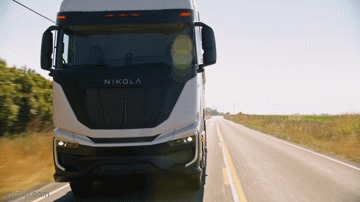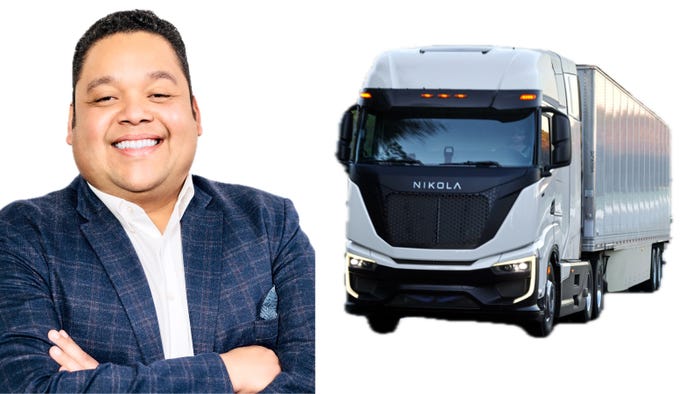Nikola Product Development Boss Outlines Green Truck Future
Nikola’s Pedro Garcia will sketch the company’s view of the commercial EV landscape in his DesignCon keynote.

DesignCon attendees can look for a 10 a.m. Wednesday, January 31 keynote presentation by Nikola’s global head of product development, where Pedro Garcia will describe his thoughts on sustainable heavy-duty, zero-emission, commercial vehicles.
He will discuss the challenges Nikola has faced in developing its Class 8 hydrogen fuel cell electric trucks for commercial over-the-highway use. Battery energy storage has proved to be impractical for such long-distance applications, so Garcia will address questions about the Nikola truck’s use of fuel cells using compressed hydrogen gas fuel.

Nikola’s global head of product development, Pedro Garcia. NIKOLA
“We will talk about what Nikola brings to the table to this space, not only the vehicles but on the hydrogen side as well,” he explained in a preview discussion. Nikola selected Bosch fuel cells to power its trucks. These cells have been optimized for heavy-duty applications, which is a pivot from the original industry expectations that fuel cells would be used for passenger vehicles.
“We’ve been in development with Bosch for quite some time, and having the ability to influence those requirements early was very advantageous for us,” Garcia said. The trucks need fuel cells producing between 150 kilowatts and 200 kW, rather than the 60 kW that would be typical for passenger vehicles.
Additionally, heavy truck operators have a different expectation for product life than passenger car owners do, Garcia pointed out. “You’d expect durability of about 200,000 miles for a passenger car, but a truck operator expects it to be profitable for 750,000 miles,” he said.
Nikola’s challenge has been to integrate the Bosch fuel cells into the truck’s many other systems, according to Garcia. “That’s the thing that excites me the most, doing the integration,” he said. One key issue is thermal management. “With a 200kW system you are generating quite a bit of heat that needs to be rejected, so packaging the thermal systems was a challenge.”
“Anybody can put together a vehicle that operates at 25 degrees C., but we tested in extreme conditions,” Garcia said. Nikola does cold weather testing on Michigan’s upper peninsula. The company is based in Arizona, so it does its hot-weather testing from its headquarters.
Hydrogen storage is always an area of concern, and Garcia says that Nikola has packed abundant capacity into its trucks. “We have cutting-edge onboard storage,” he said. “We have the highest amount of hydrogen, with 70 kg onboard in five 700-bar tanks that meet all the safety standards for crash and leak detection.”
The truck’s efficiency of 7.5 miles per kilogram. Yields a driving range of 525 miles, with refills taking 20 minutes. The storage tanks are provided by Hexagon Purus, coming from the company’s Westminster, Md. plant that has the capacity to build 10,000 such tanks a year.
Inside the cab, Nikola is also optimizing systems for maximum performance. That means predictive software integration monitoring road conditions to minimize drive times. “Having this software integration in house was a blessing for us,” Garcia said. “It gave us the ability to bring the driver interface to the next level to easily communicate with the vehicle. The number one thing that sticks with me is the smile on the face of the drivers,” he concluded.
Visit the DesignCon keynote for additional details.
About the Author(s)
You May Also Like





